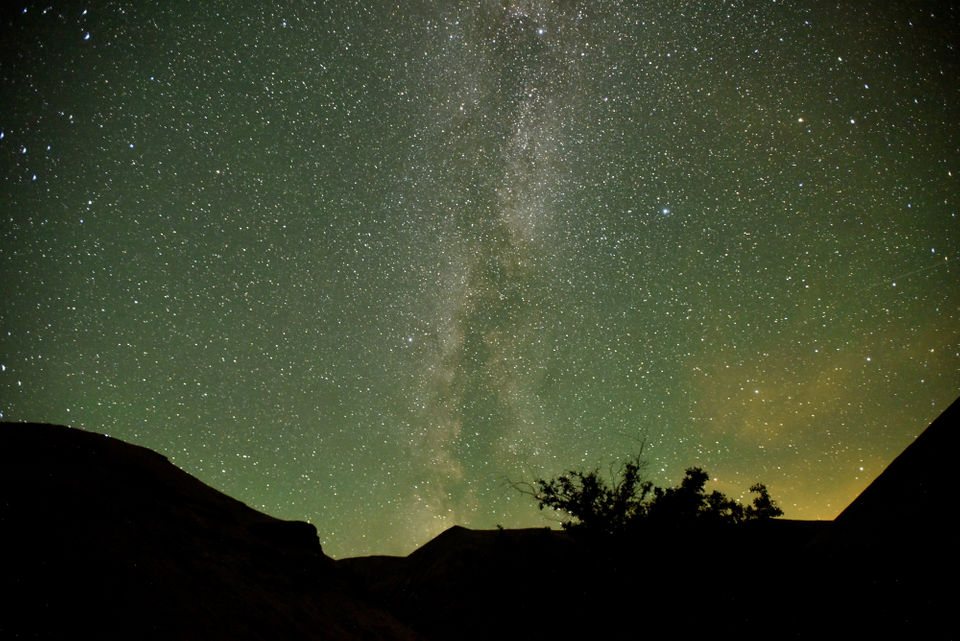
In becoming a parent, it is guaranteed that you will witness your child experiencing something remarkable for the first time. From bulging ant hills to fireworks and street artists to blazing sunsets, whatever sparks their interest, there is nothing that quite compares to the pure joy children can express. There is something magical about the way their eyes sparkle, how their face cracks into a toothy grin, and their heart warm to the sound of a squeal or giggle or gasp of astonishment! Sadly true to its namesake, a childlike sense of wonder is harder to nurture as the years pass. Many adults struggle to find something that stops them in their tracks and honestly amazes them. The truth is: this world is brimming with opportunities to be awe-struck, but people happen to find themselves a bit unprepared, in the wrong place at the wrong time, or perhaps surrounded by sour company. Could it be possible to schedule a time and place for your whole family to be impressed together? By the end of this article, I hope you will feel confident and able to do just that. Add in the fact that it is cost-effective and repeatable year after year, and I bet you are more than ready to learn about successful family stargazing!
All About Stars
Humans are very familiar with stars, particularly since almost everyone sees them each night. They are commonly seen in fabric patterns, home and holiday decor, and even used to predict our love futures! However, while we all may be familiar with the idea of stars, we forget just how impressive they are. For instance, did you know that there are millions of stars in the sky every night that you cannot see? While part of this has to do with skyglow and view obstructions, which we will talk about shortly, it is actually impossible for human eyes to detect all those blazing glories. Even on a super clear night, with no Moon and far from light sources, a person with excellent eyesight can see only about 2,000-2,500 stars, and the reason we can see them is because they are burning bigger and brighter than our own sun! Just within our own Milky Way galaxy, astronomers estimate and support that there are about 100 thousand million stars! If you need more reasons to get out there and be amazed, then check out this list of 14 Fun Facts to kindle everyone’s excitement for astronomy.
Know Before You Go
When successful stargazing is the goal, a little bit of preparation can go a long way. There are lots of things to be done ahead of time that ensure a good trip, starting with understanding your surroundings. If you live in a densely populated area with lots of artificial nighttime light, you need to get as far away from there as possible! Stars are best viewed far away from city lights, tall buildings, or trees, and on clear nights with minimal cloud coverage (and for those interested in a study as to how light pollution is affecting our view of the night sky, among many other things, check out this in-depth analysis from the International Dark-Sky Association). Always check the weather forecast, know the current moon phase, and set up at a high vantage point whenever stargazing. Keep in mind that you might not see quite as many stars as expected after you first settle in simply because human eyes can take a full thirty minutes to adjust to seeing in the dark. As a last bit of recommended prep, consider getting local experts’ opinions on the best times or places for stargazing by contacting astronomy groups in your area (see this webpage for options within Oregon)!
What to Take
One of the greatest parts of stargazing is that you truly need so little to do it! This, however, does not mean the family should head out before thinking smart and packing some basics. Walking outdoors at night demands the use of closed-toe shoes and a flashlight or lantern. Just as the rock and roots will trip you up, the ground can also be an uncomfortable place to hang out. Bring along some camping chairs or a water-resistant pad to lounge on and save some aches and pains. Keep in mind that it can quickly become chilly at night, regardless of the location or season, so taking extra jackets or blankets is a smart move. Remember that bugs like to come out at night. Oregon is lush, fertile, and a perfect habitat for mosquitos. Nothing will ruin a peaceful evening quicker than getting eaten alive by a hoard of pesky creatures! Because bug lanterns and citronella candles are also light sources, the best choice for pest control while stargazing would be bug sprays. Instead of lathering the family with smelly, harmful chemicals, consider making an all-natural choice in bug spray that is CDC-recommended as a safe, effective substitute (such as Murphy’s Naturals repellent spray). Lastly, consider grabbing binoculars or a telescope to get a closer look at the nighttime wonders, and perhaps a few trail snacks for late-night munchies!
Suggested Oregon Stargazing Locations
Should you happen to be like my family, living smack in the middle of a large city and surrounded by civilization, you will find yourself looking up to a few solitary dots scattered sparsely through the deep blue… or the thick, orange haze of skyglow. Luckily for Oregonians, there are plenty of open spaces where animals outnumber humans, artificial nighttime lighting is scarce, and the stars twinkle their hearts out. One of the greatest resources for free viewing spots in Oregon can be found on the property belonging to the Bureau of Land Management (BLM). Use this webpage about BLM camping to familiarize yourself with how to make use of this federal property you pay taxes on, then use this BLM data viewer to find some land to use near you! If your summer schedule is too packed for researching and trying out new areas, chances are that you may have a friend or family member with a rural home location that would offer some quality stargazing. Travel Oregon’s list of stargazing spots is another easy place to get started. Living in such a beautiful, nature-loving state means that stargazing can be as simple as driving out a backcountry road and finding a safe place to pull off in the middle of nowhere. There is no need to overthink it, enjoy it!
The Right Timing
While viewing the average night sky is simple and thrilling enough, there are also periods during the year when the skies are particularly active. August is statistically an excellent month of the year for stargazers due to the annual Perseid meteor shower. During peak viewing times, stargazers can witness up to 100 meteors per hour during this glorious display of natural fireworks. Use this handy meteor shower calendar to keep up to date on the most opportune chances to see shooting stars. Choosing to make space for positive family memories is always the right timing, so get out there and capture a bit of childlike wonder for you and your loved ones!

Michelle is a married mother of two toddler girls and a house full of pets. As a homegrown Oregonian, she enjoys spending her time on family adventures throughout the PNW to fuel her creative inspiration! Photography, crochet, freehand mandala designs, hiking, and gardening are a few of her hobbies that are highlighted on Instagram @xenonvogue. Each new day is a chance to be present and involved, so Michelle strives to live honoring the knowledge that this too shall pass.
